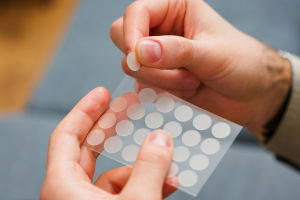Bacteria Fights
Imagine antibiotics as the superheroes of modern medicine, swooping in to stop harmful bacteria from making us sick. But what if the villains—bacteria themselves—are evolving tricks to dodge these heroes?
This is the ongoing battle of antibiotic resistance, a complex and urgent challenge where tiny microbes adapt, survive, and sometimes thrive despite our best drugs.
Let's dig deep into how antibiotics work against bacteria, how bacteria fight back, and why understanding this microbial chess game matters for everyone.
How Antibiotics Attack: Targeting Bacterial Life Lines
Antibiotics are designed to disrupt critical processes or structures unique to bacteria. Unlike human cells, bacteria have special components essential to their survival, which antibiotics exploit:
• Breaking the Bacterial Wall: Many antibiotics like penicillin target the cell wall—the protective cage holding bacteria together. By disrupting the wall's assembly, these drugs cause bacteria to burst and die.
• Jamming DNA and RNA Factories: Other antibiotics interfere with the machinery bacteria use to read their genetic instructions and reproduce, halting their ability to multiply.
• Blocking Protein Production: Bacteria rely on ribosomes to build proteins necessary for growth. Certain antibiotics bind to these ribosomes, stopping protein synthesis and effectively freezing the bacteria's functions.
By homing in on these vital targets, antibiotics either destroy bacteria outright or stop them from growing, giving our immune system a chance to clear the infection.
Bacteria's Counterattack: The Rise of Resistance
But bacteria are not passive targets. They evolve multiple mechanisms that let them resist antibiotic assault—sometimes quite cleverly. Here are key resistance strategies:
1. Pumping Out the Threat:
Bacteria have tiny molecular pumps embedded in their membranes called efflux pumps. These act like bouncers, actively ejecting antibiotics before they can do damage. By producing more of these pumps or tweaking their efficiency, bacteria lower the drug concentration inside their cells.
2. Slowing or Blocking Entry:
Some bacteria alter their cell walls or membrane channels to reduce antibiotic entry. Think of it as fortifying the gates to keep invaders out, making it harder for the drug to enter.
3. Chemical Sabotage: Destroying or Modifying Drugs:
Certain bacteria produce enzymes that chemically disable antibiotics. One famous example is beta-lactamases, enzymes that break the critical structures of penicillin and related drugs. Others go further and add chemical tags to antibiotics, changing their shape so they can no longer bind to bacterial targets.
4. Changing the Target Site:
By mutating the very molecule or structure antibiotics bind to, bacteria make those drugs ineffective—like changing the locks so old keys no longer work.
5. Finding Workarounds (Metabolic Bypass):
Some bugs find new biochemical routes around the blockades antibiotics set, allowing them to survive despite the drug's presence.
Each of these strategies can be encoded in bacterial DNA and passed on to offspring, sometimes even shared between different bacteria through horizontal gene transfer, accelerating the spread of resistance.
Why Resistance Is a Growing Challenge
The rise of antibiotic resistance is no accident. Heavy and sometimes improper use of antibiotics—not finishing prescribed courses, using antibiotics for viral infections, or in agriculture—gives bacteria opportunities to develop and spread resistance.
This leads to infections that are harder to treat and require stronger, more costly, or more toxic drugs. According to experts, resistance threatens to undermine decades of medical progress and could push us back to a pre-antibiotic era where minor infections become deadly.
What Can Be Done? Fighting Back With Smarter Solutions
Tackling antibiotic resistance needs a multipronged approach:
• Stewardship: Using antibiotics carefully and only when necessary to slow resistance buildup.
• Research: Developing new antibiotics targeting different bacterial mechanisms and non-traditional therapies like bacteriophages (viruses that infect bacteria).
• Diagnostics: Improving tools to rapidly identify infections and choose effective treatments, avoiding blindly prescribing broad-spectrum antibiotics.
• Global Surveillance: Monitoring resistance trends worldwide to respond quickly to emerging threats.
Your Role in This Battle
Each of us play a part—by following prescription guidelines, not demanding antibiotics for colds, and practicing good hygiene to prevent infections. Understanding bacteria's clever adaptations helps us appreciate the importance of these simple but powerful actions.
Thinking About the Future
In this microscopic battle, bacteria evolve constantly, and antibiotics must keep pace with new weapons and strategies. The science of antibiotic resistance is a vivid reminder of nature's resilience and the need for responsible innovation.
What surprises you most about how bacteria resist antibiotics? Have you ever considered how your own actions might influence this invisible battle? The more we understand this fight, the better equipped we are to win it—together.
-
 Clearer Skin Ahead!Why Do Pimples Keep Coming Back?! Try These Fast Fixes That Help Clear Skin And Fade Scars For Real!
Clearer Skin Ahead!Why Do Pimples Keep Coming Back?! Try These Fast Fixes That Help Clear Skin And Fade Scars For Real! -
 My Night Skin Steps GlowSkin feels tired? Sensitive? See what makes this PM lineup so calming and fresh!
My Night Skin Steps GlowSkin feels tired? Sensitive? See what makes this PM lineup so calming and fresh! -
 Shampoo Showdown Now!Hair Fall? Dry Ends? Cool Scalp?! Which Shampoo Wins My Heart? See The Real Review Inside!
Shampoo Showdown Now!Hair Fall? Dry Ends? Cool Scalp?! Which Shampoo Wins My Heart? See The Real Review Inside!
Contact to : xyjph123@gmail.com
Privacy Agreement
Copyright © boyuanhulian 2020 - 2022. All Right Reserved.
Privacy Agreement
Copyright © boyuanhulian 2020 - 2022. All Right Reserved.